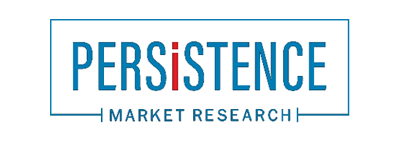Global automotive silicone market forecast at $4.2 billion by 2030
Pune, India – The global automotive silicone market is on a growth trajectory, projected to expand at a CAGR of 6.8%, reaching US$4.2 billion by 2030 from US$2.6 billion in 2023 according to Persistence Market Research.
The Automotive Silicone Market refers to the industry involved in the production, distribution, and utilization of silicone-based products within the automotive sector. Silicone, a versatile polymer, finds applications in various automotive components such as seals, gaskets, adhesives, lubricants, and coatings. Known for its heat resistance, durability, and flexibility, automotive silicone plays a crucial role in enhancing vehicle performance and longevity. As an integral part of manufacturing processes, it contributes to the efficiency and safety of automotive applications. This market encompasses a range of silicone products tailored to meet the specific needs and standards of the automotive industry.
High Initial Investment: Entering the automotive silicone market requires significant capital investment for research and development, manufacturing facilities, and establishing a distribution network. Intense Competition: The market is dominated by established players with strong brand recognition and customer loyalty. New entrants may find it challenging to compete effectively against these incumbents. Stringent Regulatory Standards: The automotive industry is subject to stringent regulatory standards concerning safety, emissions, and performance. Ensuring compliance with these regulations can be complex and costly for new entrants. Technological Barriers: The development of innovative silicone products tailored to specific automotive applications requires advanced technology and expertise. New entrants may face challenges in acquiring the necessary technical know-how and intellectual property rights. Opportunities for New Entrants: Innovation and Differentiation: There is a growing demand for innovative silicone-based solutions that offer enhanced performance, durability, and sustainability. New entrants can capitalize on this opportunity by developing unique products tailored to specific automotive applications. Partnerships and Collaborations: Collaborating with established automotive manufacturers, suppliers, or research institutions can provide new entrants with access to expertise, resources, and market insights, accelerating their market entry and growth. Focus on Niche Markets: New entrants can differentiate themselves by focusing on niche markets or applications within the automotive silicone market, such as electric vehicles, autonomous driving systems, or specific automotive components. Sustainable and Eco-Friendly Solutions: With increasing emphasis on sustainability and environmental responsibility, there is a growing demand for eco-friendly silicone products. New entrants can leverage this trend by developing sustainable manufacturing practices and eco-friendly silicone formulations. In conclusion, while new entrants in the automotive silicone market face challenges such as high initial investment, intense competition, and stringent regulatory standards, they also have opportunities to differentiate themselves through innovation, partnerships, niche market focus, and sustainable solutions. By strategically addressing these challenges and capitalizing on opportunities, new entrants can establish a foothold in the rapidly growing automotive silicone market.
In the competitive automotive silicone market, leading players like Henkel, 3M, Elkem ASA, and others are driving innovation through intensive R&D, focusing on durability, sustainability, and performance. Strategic partnerships, mergers, and acquisitions are key strategies to expand market presence and strengthen capabilities. As environmental sustainability becomes a priority, companies are developing eco-friendly silicone solutions, intensifying competition. Success hinges on continuous innovation, product differentiation, and strategic collaborations, shaping the competitive landscape in this dynamic industry.

